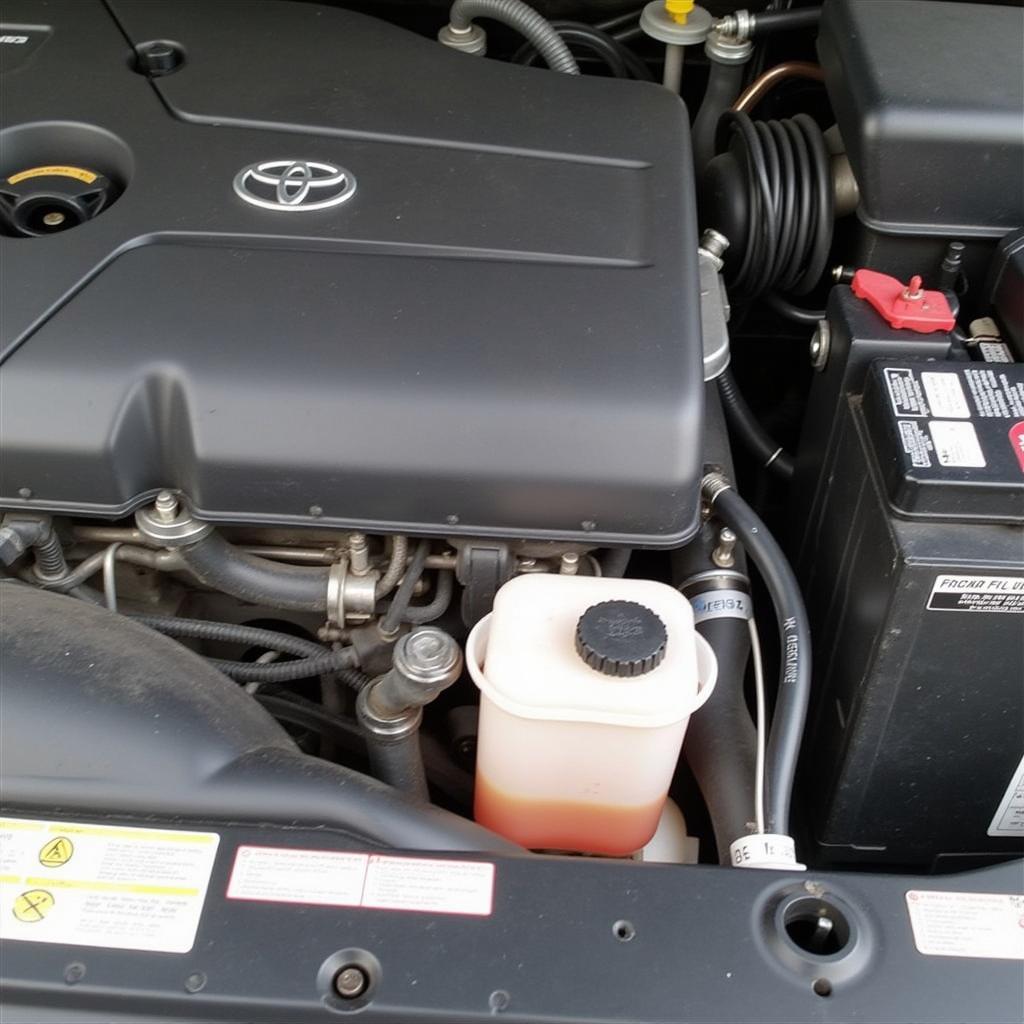The dreaded Saab ABS brake warning light. Seeing it illuminate on your dashboard can be unsettling, but understanding its causes and potential solutions can empower you to address the issue effectively. This guide provides a comprehensive overview of the Saab ABS brake warning light, from common causes to advanced diagnostics and remote software solutions.
For some Saab models, you might find helpful resources regarding specific ABS and brake warning light issues: saab 9-3 abs and brake warning light.
Understanding the Saab ABS System
The Anti-lock Braking System (ABS) is a critical safety feature designed to prevent wheel lockup during hard braking. This allows the driver to maintain steering control and avoid skidding. A complex network of sensors, modules, and hydraulic components work together to ensure the ABS functions correctly. When a fault is detected within this system, the Saab ABS brake warning light is triggered.
Common Causes of the Saab ABS Brake Warning Light
Several factors can trigger the ABS brake warning light in a Saab. These range from simple issues like low brake fluid or a faulty ABS sensor to more complex problems within the ABS module itself.
- Low Brake Fluid: One of the most common culprits. Low brake fluid can signal a leak in the braking system, which should be addressed immediately.
- Faulty ABS Wheel Speed Sensors: These sensors monitor the rotational speed of each wheel. A malfunctioning sensor can send incorrect data to the ABS module, triggering the warning light.
- Damaged ABS Wiring: Wiring issues, such as corrosion or breaks in the wiring harness, can disrupt communication between the ABS components and the module.
- Malfunctioning ABS Module: The ABS module is the brain of the system. Internal faults within the module can lead to a variety of issues, including the illumination of the warning light.
- Brake Pad Wear: While not directly related to the ABS system, worn brake pads can sometimes trigger the brake warning light, which can be accompanied by the ABS light.
If your Saab is a 2002 95 model, you might find this resource specifically helpful: saab 95 2002 brake warning light and abs light on.
Diagnosing the Saab ABS Brake Warning Light
Diagnosing the root cause of the Saab ABS brake warning light requires a systematic approach.
- Visual Inspection: Start by checking the brake fluid level. Inspect the brake lines and connections for any signs of leaks or damage.
- Diagnostic Scan Tool: A professional-grade scan tool is essential for retrieving diagnostic trouble codes (DTCs) from the ABS module. These codes provide valuable insights into the specific fault within the system.
- Testing the ABS Sensors: Using a multimeter or oscilloscope, test the resistance and signal output of each ABS wheel speed sensor.
- Checking the ABS Wiring: Inspect the wiring harness for any signs of damage or corrosion. Check for continuity and proper voltage supply to the ABS components.
Remote Software Solutions for Saab ABS Issues
In some cases, the Saab ABS brake warning light can be resolved through remote software programming and installation. This innovative approach allows for efficient and convenient repairs without the need for physical access to the vehicle. By connecting to the vehicle’s onboard diagnostic port remotely, specialized software can be used to update the ABS module, reprogram its parameters, and even clear persistent fault codes.
“Remote diagnostics and programming offer a significant advantage in addressing certain ABS issues quickly and effectively,” says automotive electrical engineer, Dr. Lars Svensson. “This technology allows for timely repairs, minimizing downtime and inconvenience for Saab owners.”
DIY vs. Professional Repair
While some basic checks can be performed by DIY enthusiasts, diagnosing and repairing the ABS system often requires specialized knowledge and tools. Complex issues like a malfunctioning ABS module may necessitate professional intervention.
For owners of older Saab 900 models experiencing the brake warning light, this article might be relevant: saab 900 brake warning light.
Preventing Future Saab ABS Brake Warning Light Issues
Regular maintenance is crucial for preventing future ABS issues. This includes:
- Routine Brake Fluid Checks and Changes: Ensure the brake fluid is at the correct level and change it according to the manufacturer’s recommendations.
- Brake Inspections: Regular brake inspections can identify potential issues like worn brake pads or damaged brake lines before they escalate.
- Professional Diagnostics: Periodic diagnostic scans can detect hidden problems within the ABS system and prevent future warning light occurrences.
“Regular preventative maintenance is essential for maintaining the reliability and safety of the ABS system in any vehicle, especially Saabs known for their sophisticated technology,” adds Dr. Svensson. “Addressing minor issues proactively can prevent costly repairs down the line.”
Conclusion
The Saab ABS brake warning light shouldn’t be ignored. While it can be triggered by relatively minor issues, it can also indicate more serious problems within the ABS system. By understanding the potential causes and utilizing appropriate diagnostic techniques, you can effectively address the issue and ensure your Saab’s braking system operates safely and efficiently. Don’t hesitate to seek professional help if you’re unsure about diagnosing or repairing the issue yourself. Addressing the Saab ABS brake warning light promptly is crucial for maintaining your vehicle’s safety and performance.
If your 2001 Saab 9-3 has a randomly appearing brake warning light, consider this resource: 2001 saab 9-3 brake warning light random.
Also, check out this resource for more information on Saab 9-3 ABS and brake warning light issues: Saab 9 3 abs and brake warning light.

